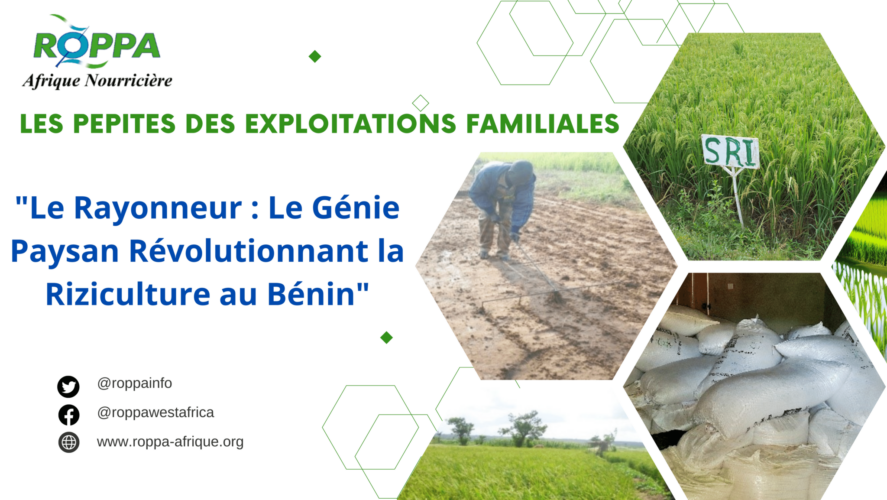The wonders of peasant ingenuity are often underestimated. Today, we explore the Seeder, a revolutionary tool that has transformed rice farming in Benin. The Council for Cooperation among Rice Producers in Benin (CCR-B), established in 2006, has always had the primary mission to represent the interests of Beninese rice producers and to promote their professionalization. One of their greatest achievements is undoubtedly the introduction of the Seeder in the project to improve the productivity of rice farms in South Benin.
Designed as a type of rake, the Seeder makes it easier to transplant rice seedlings, a once laborious task, as part of the System of Rice Intensification (SRI). Implemented with the participation of the “Integration of Climate Change Adaptation in the Sectors of Agriculture and Water in West Africa” program, this project aimed to support 450 rice producers in eight municipalities in South Benin.
Since its introduction in 2008, the Seeder has undergone several modifications and improvements to meet the specific needs of rice producers. Its ease of use has reduced the labor required for transplanting, thus allowing producers to increase the area of their farms using SRI and improve their yields.
The use of the Seeder has had several beneficial impacts on rice production in Benin. On a technical level, it has enabled better management of plants, soil, water, and nutrients, while reducing the use of chemical fertilizers. Economically, the reduction in time and labor required for transplanting has increased producer productivity. Environmentally, the use of the Seeder has promoted sustainable and environmentally friendly agriculture by reducing the use of external inputs. Regarding food security, the adoption of SRI, facilitated by the Seeder, has improved rice productivity and the quality of the rice produced.
The introduction of the Seeder has not only increased the productivity and incomes of rice farmers but has also sparked interest among the youth in rice farming as a viable occupation, thus contributing to the retention of youth in rural areas. Despite these successes, technical and financial challenges persist, such as adapting the Seeder to different ecologies and seeking partners for its large-scale dissemination.
However, the experience of the Seeder in Benin can be easily replicated in other contexts, provided that we rely on the endogenous knowledge of peasants and create favorable conditions for rice production. In conclusion, the Seeder has become an essential tool for the adoption of SRI and the improvement of rice productivity in Benin. Its dissemination in other regions could strengthen food security and sovereignty in the country.

For more information: www.roppa-afrique.org
To download the capitalization document: www.roppa-afrique.org/gestcon

